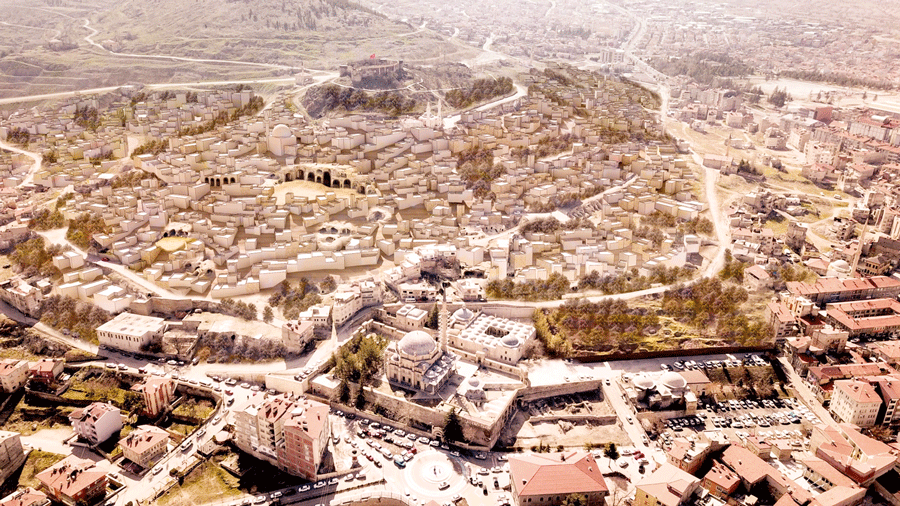
A historical settlement that was discovered by chance during urban transformation works five years ago in the Central Anatolian province of Nevşehir is set to be opened to tourism soon.
Discovered during the implementation of “Nevşehir Castle and Environment Urban Transformation Project,” carried out by the Nevşehir Municipality and the Housing Development Administration (TOKI), the settlement has been cleaned and prepared to open to visits.
In the area, declared as a third-degree archaeological site by the Culture and Tourism Ministry, carved churches and passage tunnels, 1000 chambers and various objects have been unearthed so far.
Covering an area of approximately 400,000 square meters, the settlement is preparing to serve tourists from all over the world as a new tourism destination.
Within the scope of the project prepared by Nevşehir Municipality, art galleries, museums, boutique hotels, shopping and sightseeing areas are planned to be established, and some of these venues are set to open next year.
Speaking to the state-run Anadolu Agency, Nevşehir Mayor Rasim Arı said that the project to be implemented in the area is underway. Stating that they were very excited about the works, Arı said, “We plan to open the area to tourism partially next summer. This place will provide great excitement and contribution to Turkish tourism. We aim to increase the number of tourists coming to our region to 7 million at the end of seven years. At the same time, we will also enjoy the introduction of a new tourism destination to the world.”
Arı stressed that the studies will be sensitive to the preservation of the historical touch of the settlement and that they benefited from examples from different countries in the preparation of the project.
“We want to start works as soon as possible. We will protect the historical tissue. We will make a very special place by taking examples in different countries as a model. There will be boutique hotels, covered bazaar, shopping galleries, museums, where historical artifacts from cleaning works will be exhibited, as well as the areas where artists will be able to work.
Restoration projects of Çanlı and Virgin Mary churches, which will be integrated with this place, have been prepared. The cost of restoration of these two structures will reach 30 million Turkish Liras. I hope this important project contributes to our city and the country.”
The archaeologist coordinating the technical studies in the area, Semih İstanbulluoğlu, said that the site was thought to be an underground city at first, but it became clear that it was a settlement carved into the foot of the mountain.
“It was called an underground city because every element of an underground city was here. The difference between the two is that the structure of the underground cities opens from the outside to the lower floors, but here, galleries are opened horizontally into a small mountain. According to the findings, the project, which was prepared for the settlement, where life continued in the Roman, Byzantine, Seljuk and Ottoman periods since the 6th century, will be the healthiest work that will carry this area to the next centuries,” İstanbulluoğlu said.